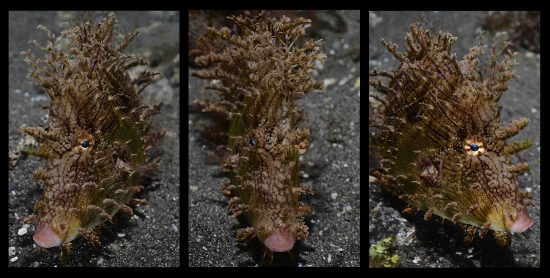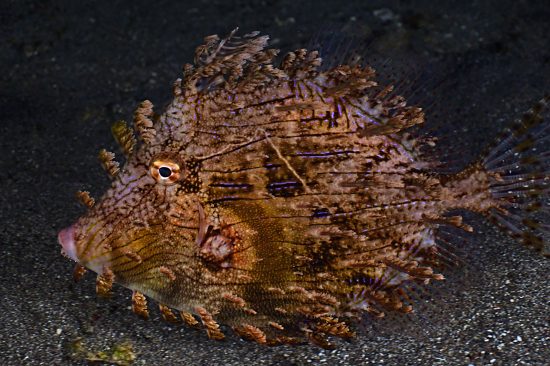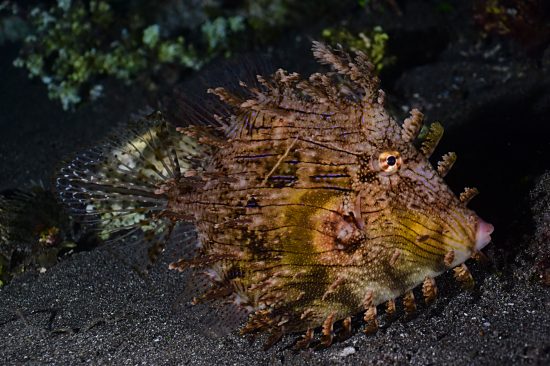




When we saw the pictures that our photographer Janez Kranjc had taken, we joked that he had found a "hairy fish". In the diving center they told us that it was a rare one which people don't often get to see, so we looked at a book to try to identify it!
We found out that it is called the 'prickly leather-jacket fish', belonging to the Chaetodermis genus (gr. chaite- hairs, derma-skin) of the Monacanthidae family (Filefish). The name of the species, 'Penicilligerus', originates from the Latin 'penicillus', which means 'brush'. It sounds like the scientists gave it a name following the same logic as us, for obvious reasons.
Distribution and habitat
The prickly leather-jacket fish can be found in the Indo-West Pacific and Indo-Malayan region, from Australia to Japan.
It inhabits lagoons, inshore seagrass beds and corals as well as offshore trawling grounds down to depths of 45 m. Our encounter with this fish happened during a night dive in the Leba-Leba bay, in the archipelago of Alore, Indonesia.
Morphology
Its body grows up to 35 cm in length and its color varies anywhere from cream/white to green/brown, with brown horizontal lines and small bright dots here and there. Juveniles have a lighter color that darkens with age, so we could say that the one in the pictures is an adult.
They have more-or-less transparent fins. They are great at camouflaging themselves and imitating the environment around them. When trying to blend in, they remain totally static, as if they were floating algae. That's why Janez could get close to photograph this one.
It’s not only due to its rarity, but also its camouflage that it is very hard to spot this fish. Only experienced divers with a trained eye are able to distinguish it in its habitat.
Food
A laterally-compressed body and front-pointing mouth make it easy for this fish to slip through the labyrinth of a coral reef in search of food, such as benthic invertebrates, eggs, seaweed… basically anything that it can catch in its small mouth. They are not aggressive, but they raise their first dorsal fin or grind their front teeth, producing a low-pitched growling sound, to discourage predators.
Extra facts
The prickly leather-jacket fish is often bought for aquariums due to its unusual look. It is friendly to other fish, but there can only be one of them in the tank as otherwise they attack other individuals of their own genus. It’s easy to feed them if there is naturally found live food to consume, such as Aiptasia, otherwise target feeding may be necessary. Although it is safe for the other fish in the aquarium, some people avoid buying them because they can pick on coral polyps and their tissue, as that is an important part of their diet in nature.
This fish is part of the local diet in some areas. Its meat is considered good for human consumption, and the skin was used in the past as sandpaper for smoothing objects.
Blog by Jelena Dragovic, Biology student
Photos by Janez Kranjc.
 Ivana and Janez
Ivana and Janez 18th March 2024
18th March 2024